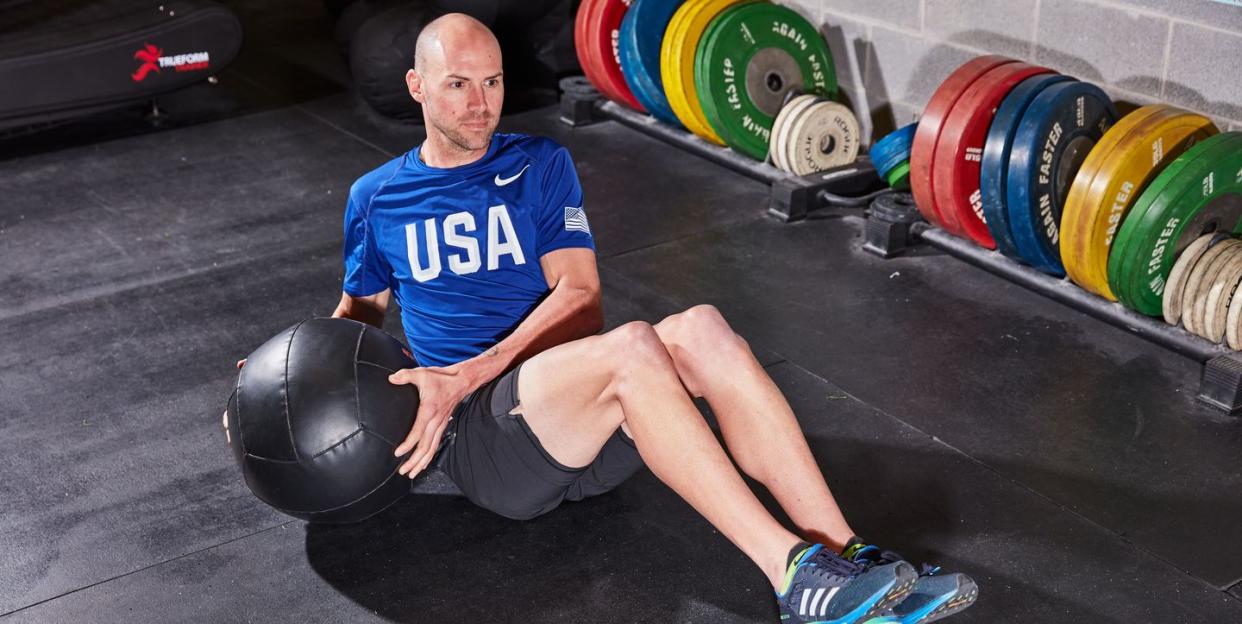To Lower Your Risk of Type 2 Diabetes, Research Suggests Strength Training

Resistance training may lower your risk of developing type 2 diabetes, according to new research.
Why? This type of training helps regulate your blood sugar and improves your cardiometabolic health.
Exercises such as dumbbell deadlifts, Russian twists, and triceps dips are great for building cycling-specific strength.
Exercise using resistance bands or free weights may lower your risk of developing type 2 diabetes, because it helps regulate blood sugar and improves cardiometabolic health, according to a research review in the journal Sports Medicine.
Researchers looked at 14 controlled trials that used resistance training interventions with 668 participants who had high risk of diabetes. They found significantly lowered risk for those who stuck with the training at least 12 weeks, thanks to improvements in glycemic control, body fat, and blood lipids. Training of a certain intensity—working at 60 percent of participants’ one-rep max—that included 10 to 15 repetitions per set seemed especially helpful, the researchers concluded.
→ Get Bicycling All Access to stay on top of the latest health and fitness news!
Researchers also found that studies incorporating dietary components didn’t result in greater benefits, which could mean you can’t get an extra boost of risk reduction by adding in smart diet choices. However, given the importance of diet on diabetes risk reduction, this is a finding that calls for more controlled protocols and research, they suggested.
This isn’t the first time the connection between strength training and diabetes has been made. Research from the journal Mayo Clinic Proceedings shows that having even a moderate amount of muscle strength can lower risk of developing type 2 diabetes by 32 percent.
Some researchers have suggested this type of training can help those who already have the condition as well. A research review in the journal Nutrition & Metabolism noted that resistance training is so effective for glycemic control and cholesterol metabolism in people with type 2 diabetes that it should be prescribed as part of treatment.
Why would resistance training have this effect rather than steady-state cardio like riding your bike? It’s all about glycogen use, according to Carol Mack, D.P.T., C.S.C.S.
“The liver and muscles store glycogen,” she told Bicycling. “The more that can be stored in those areas means less would be circulating in the blood, so blood sugar would be lower. The great thing about resistance training is that it helps build more muscle, which then can store more glycogen.”
Steady-state cardio, like cycling, uses glycogen for fuel but doesn’t build muscle mass as effectively as resistance training, she added. That’s why adding resistance training to your fitness mix can be valuable, giving you the advantages of each.
New to strength training and not sure where to begin? Try these essential exercises for cyclists, such as dumbbell deadlifts, Russian twists, and triceps dips. You can start with your own body weight or a light weight, and work your way up as you get stronger.
You Might Also Like

